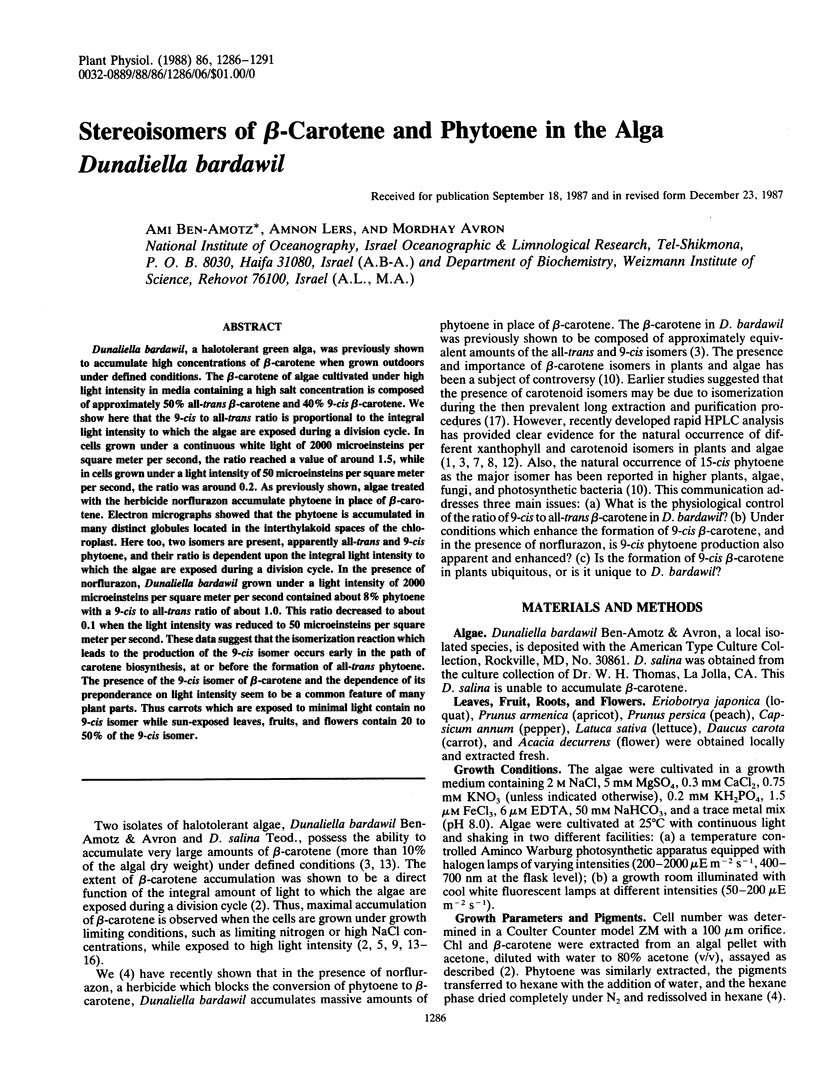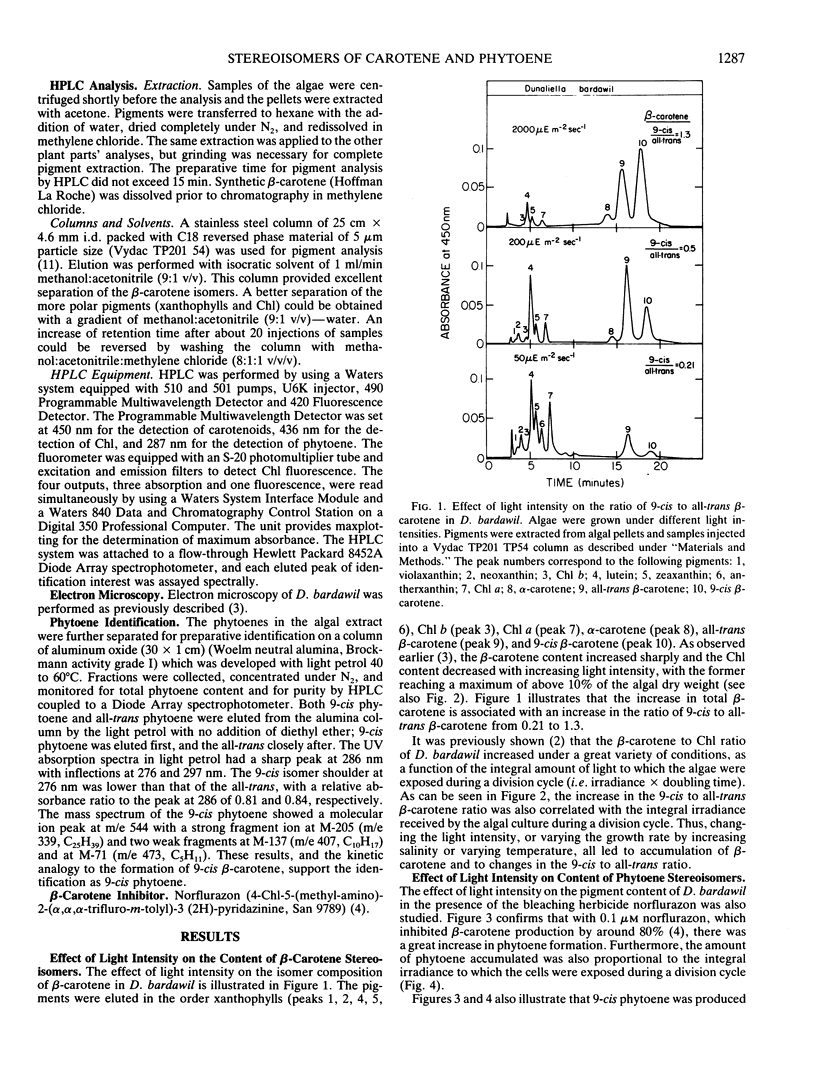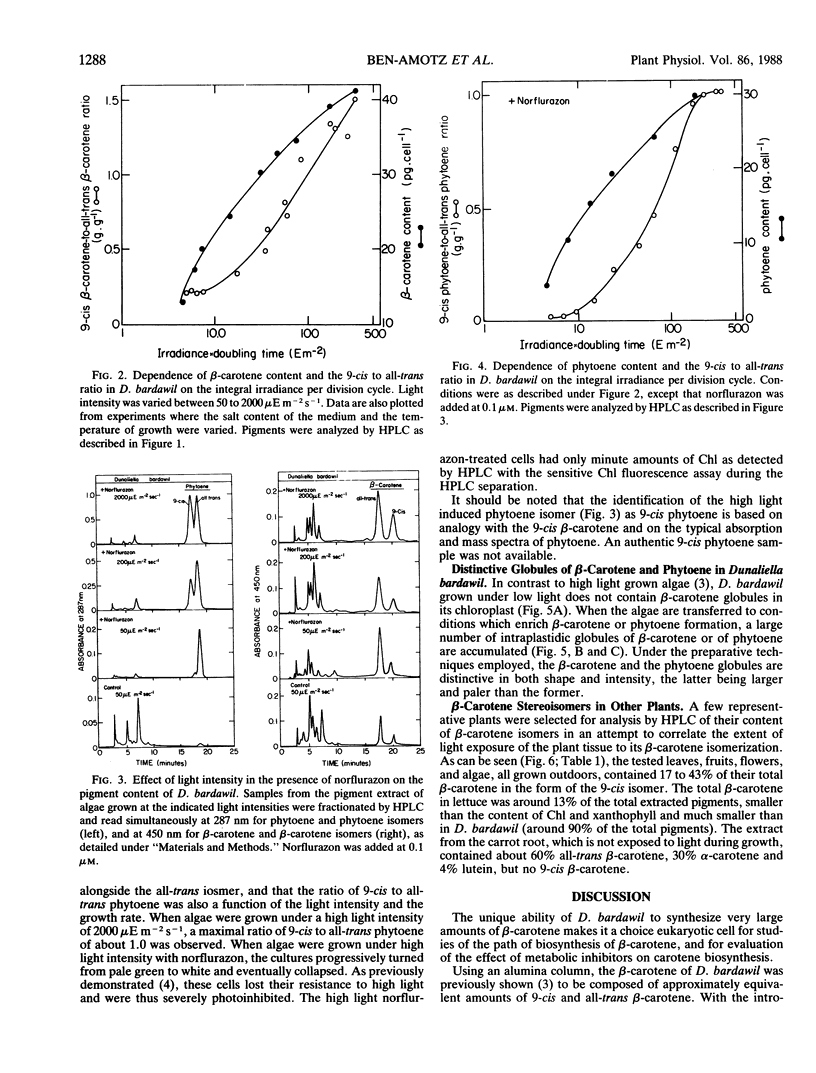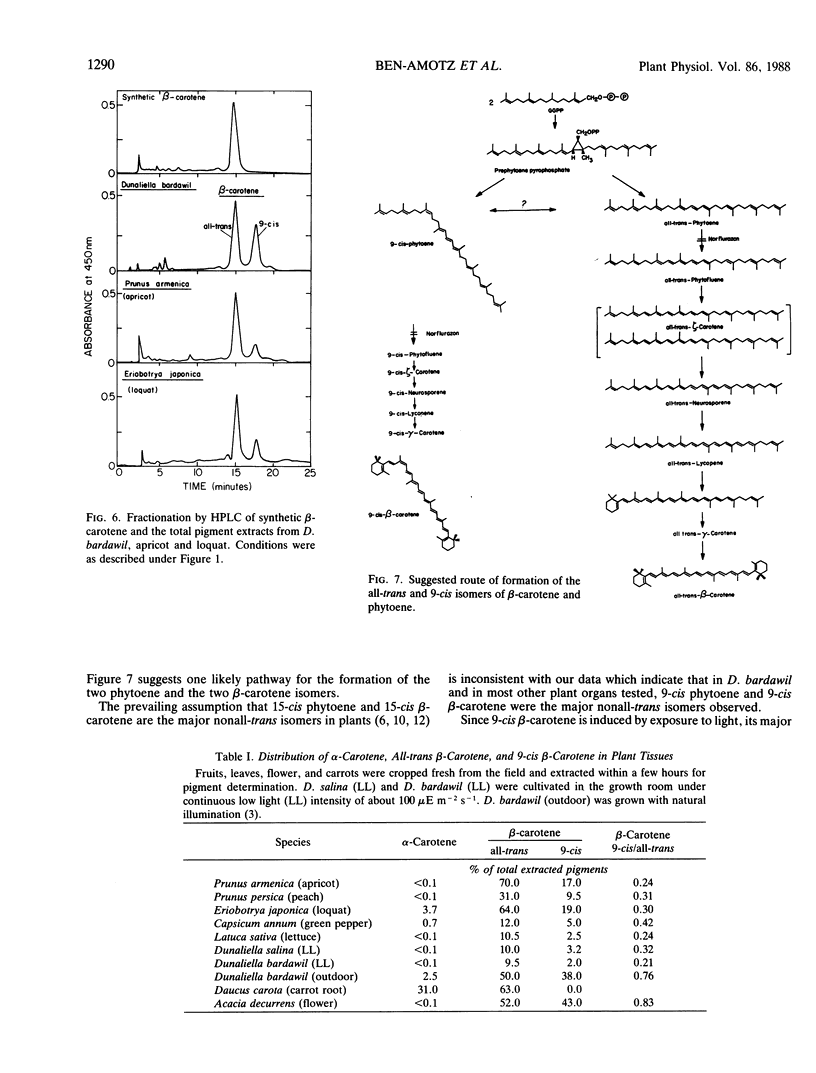Abstract
Dunaliella bardawil, a halotolerant green alga, was previously shown to accumulate high concentrations of β-carotene when grown outdoors under defined conditions. The β-carotene of algae cultivated under high light intensity in media containing a high salt concentration is composed of approximately 50% all-trans β-carotene and 40% 9-cis β-carotene. We show here that the 9-cis to all-trans ratio is proportional to the integral light intensity to which the algae are exposed during a division cycle. In cells grown under a continuous white light of 2000 microeinsteins per square meter per second, the ratio reached a value of around 1.5, while in cells grown under a light intensity of 50 microeinsteins per square meter per second, the ratio was around 0.2. As previously shown, algae treated with the herbicide norflurazon accumulate phytoene in place of β-carotene. Electron micrographs showed that the phytoene is accumulated in many distinct globules located in the interthylakoid spaces of the chloroplast. Here too, two isomers are present, apparently all-trans and 9-cis phytoene, and their ratio is dependent upon the integral light intensity to which the algae are exposed during a division cycle. In the presence of norflurazon, Dunaliella bardawil grown under a light intensity of 2000 microeinsteins per square meter per second contained about 8% phytoene with a 9-cis to all-trans ratio of about 1.0. This ratio decreased to about 0.1 when the light intensity was reduced to 50 microeinsteins per square meter per second. These data suggest that the isomerization reaction which leads to the production of the 9-cis isomer occurs early in the path of carotene biosynthesis, at or before the formation of all-trans phytoene. The presence of the 9-cis isomer of β-carotene and the dependence of its preponderance on light intensity seem to be a common feature of many plant parts. Thus carrots which are exposed to minimal light contain no 9-cis isomer while sun-exposed leaves, fruits, and flowers contain 20 to 50% of the 9-cis isomer.
Full text
PDF





Images in this article
Selected References
These references are in PubMed. This may not be the complete list of references from this article.
- Ben-Amotz A., Avron M. On the Factors Which Determine Massive beta-Carotene Accumulation in the Halotolerant Alga Dunaliella bardawil. Plant Physiol. 1983 Jul;72(3):593–597. doi: 10.1104/pp.72.3.593. [DOI] [PMC free article] [PubMed] [Google Scholar]



